
16 minute read
Gundog And Heavy Breeds Show In Review
Dogs Queensland continues our series of pictorial features. This month we showcase a selection of pictures from the Gundog and Heavy Breeds Show held on Saturday 27 February 2021 at Durack and congratulate all the winners. Thank you to all those who made the show a success including exhibitors, workers and volunteers. The following images were taken by TAK Photography. To make a purchase or to view more images, visit www.takphotography.com.au.

BEST IN SHOW – DANDIE DINMONT TERRIER CH JOLLYGAZE DASHING DIPLOMAT RUNNER UP IN SHOW –KEESHOND SUP CH & CAN CH Klompen’s Dancing With Darcy (IMP CAN)

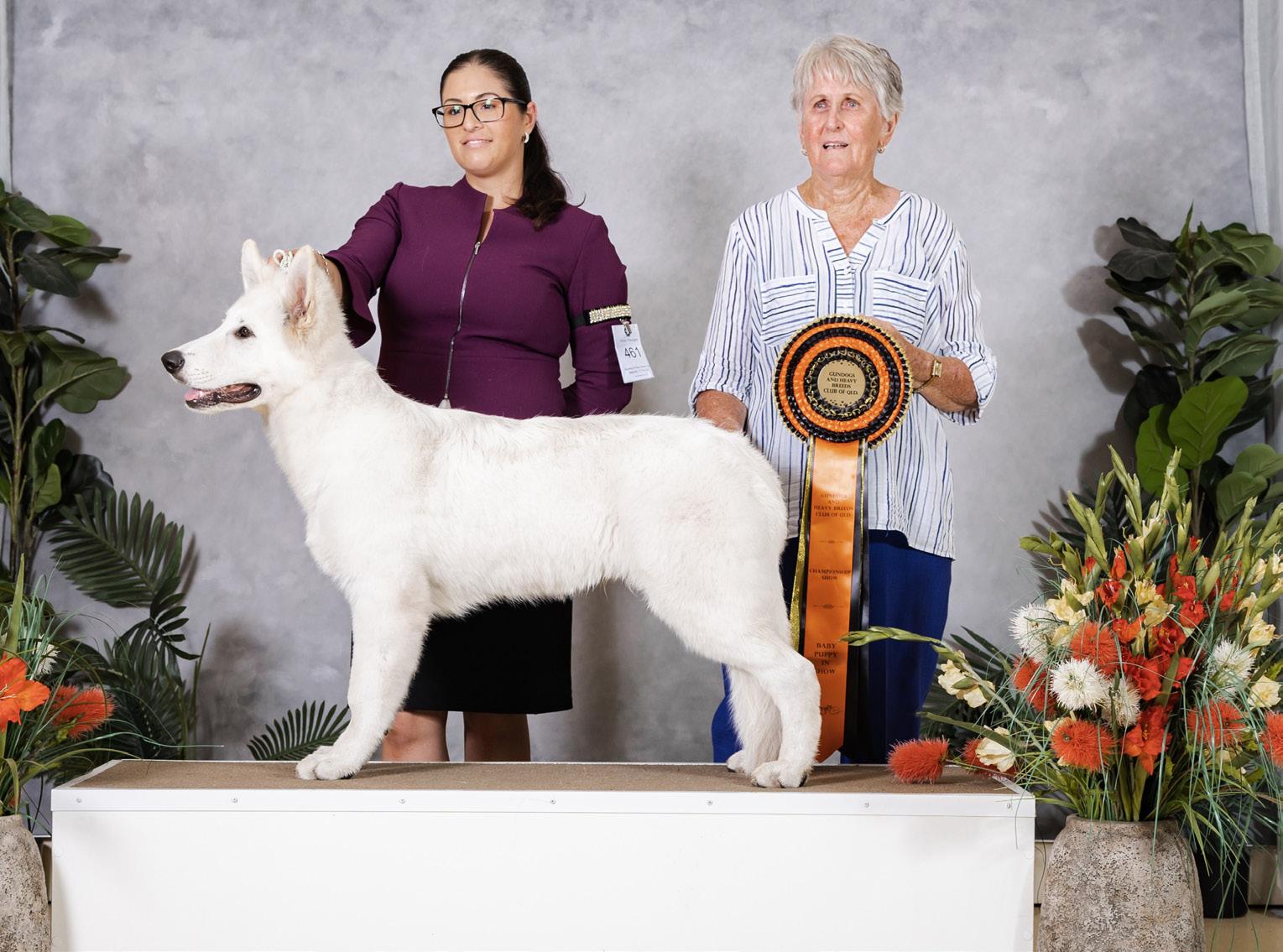
BABY PUPPY IN SHOW –WHITE SWISS SHEPHERD DOG KASSREIGN A SONG OF ICE N FIRE
MINOR PUPPY IN SHOW –AFGHAN HOUND TIANZE RED HOT CHILLI KISSES


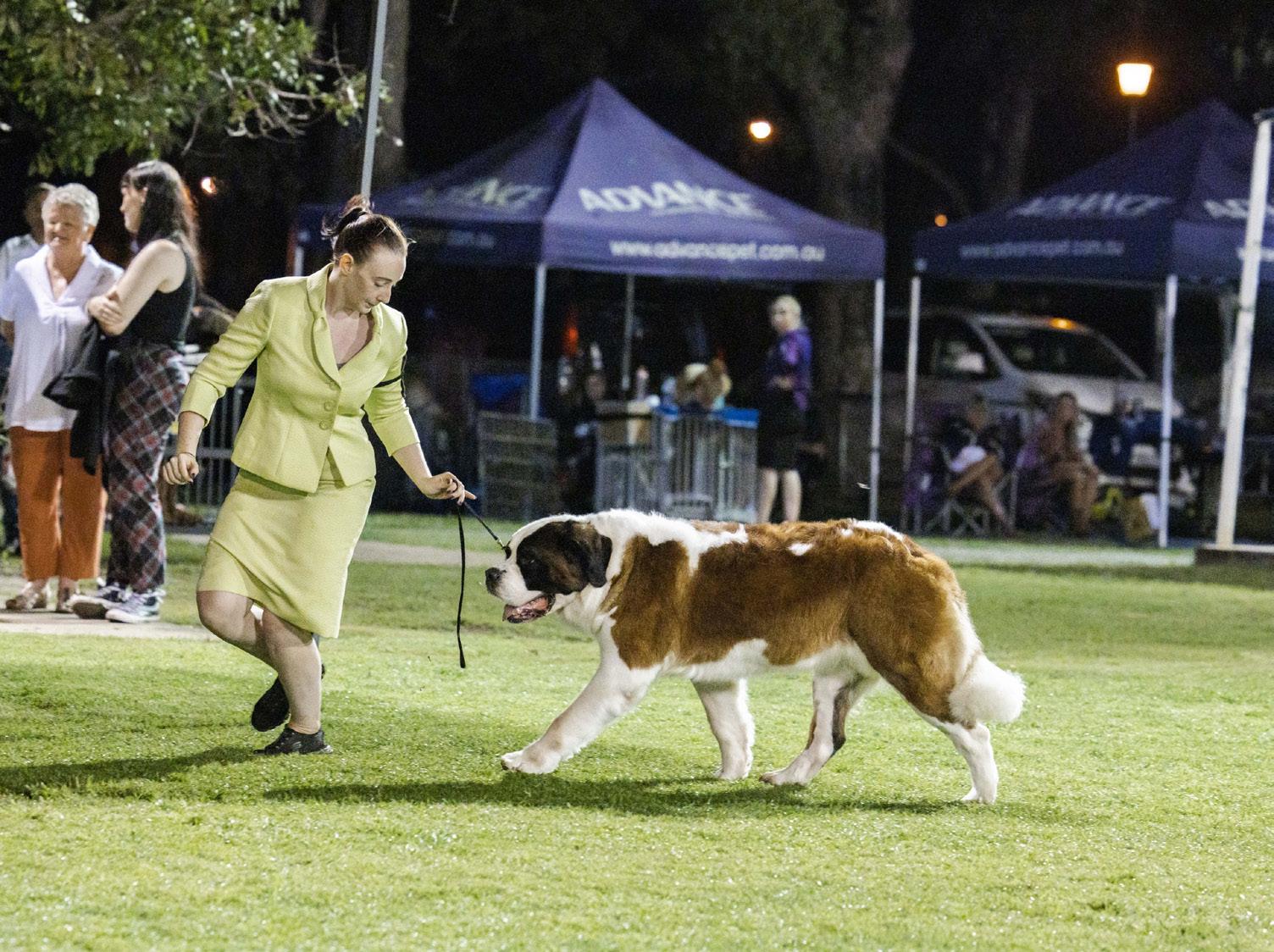
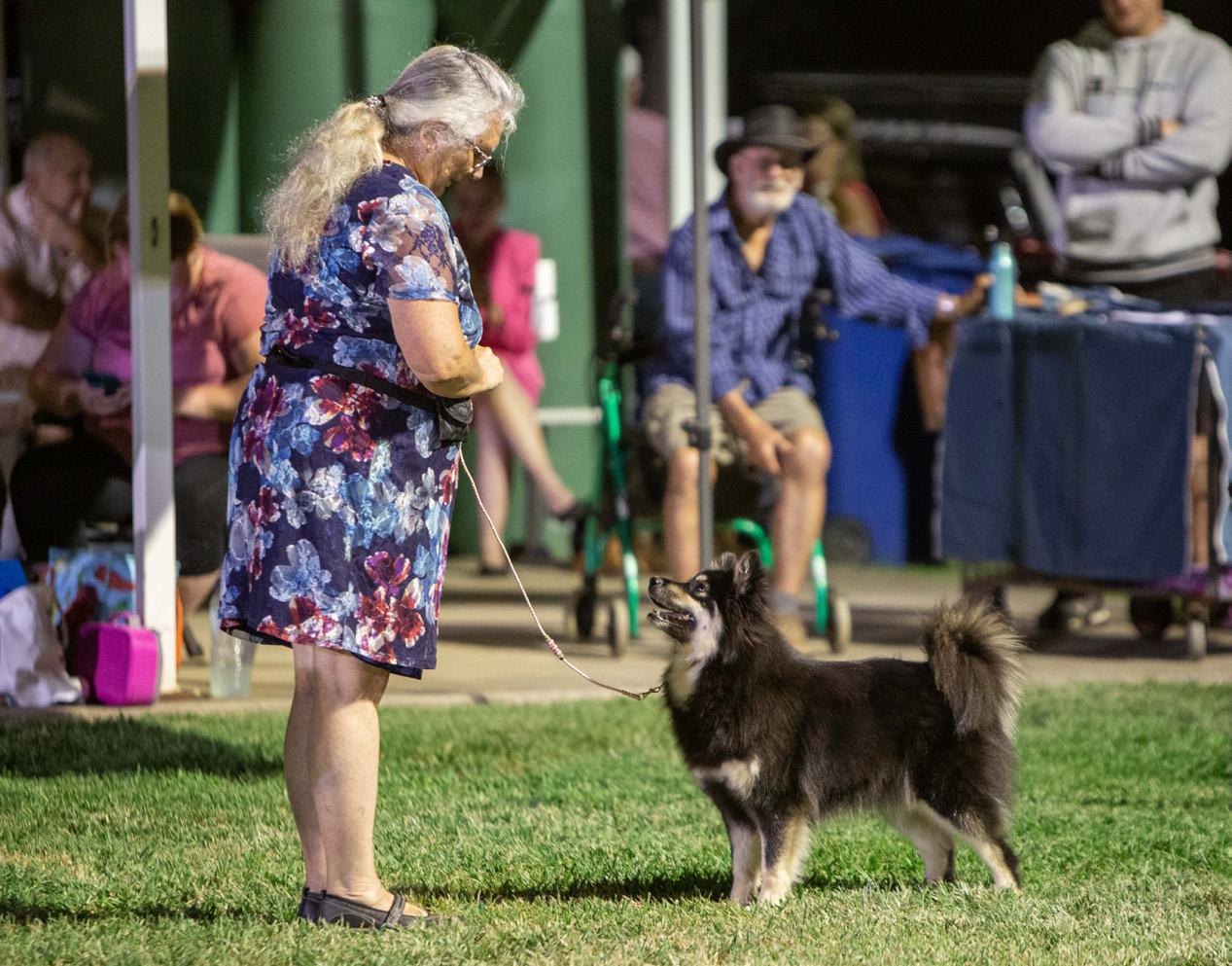



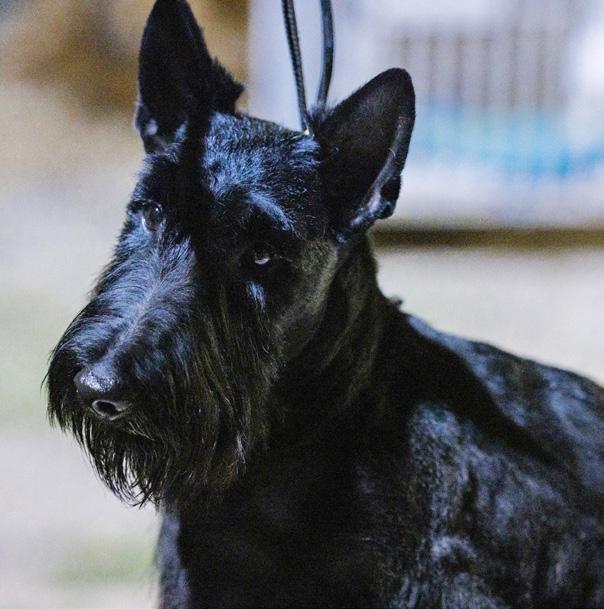
First Aid: Transporting an injured dog
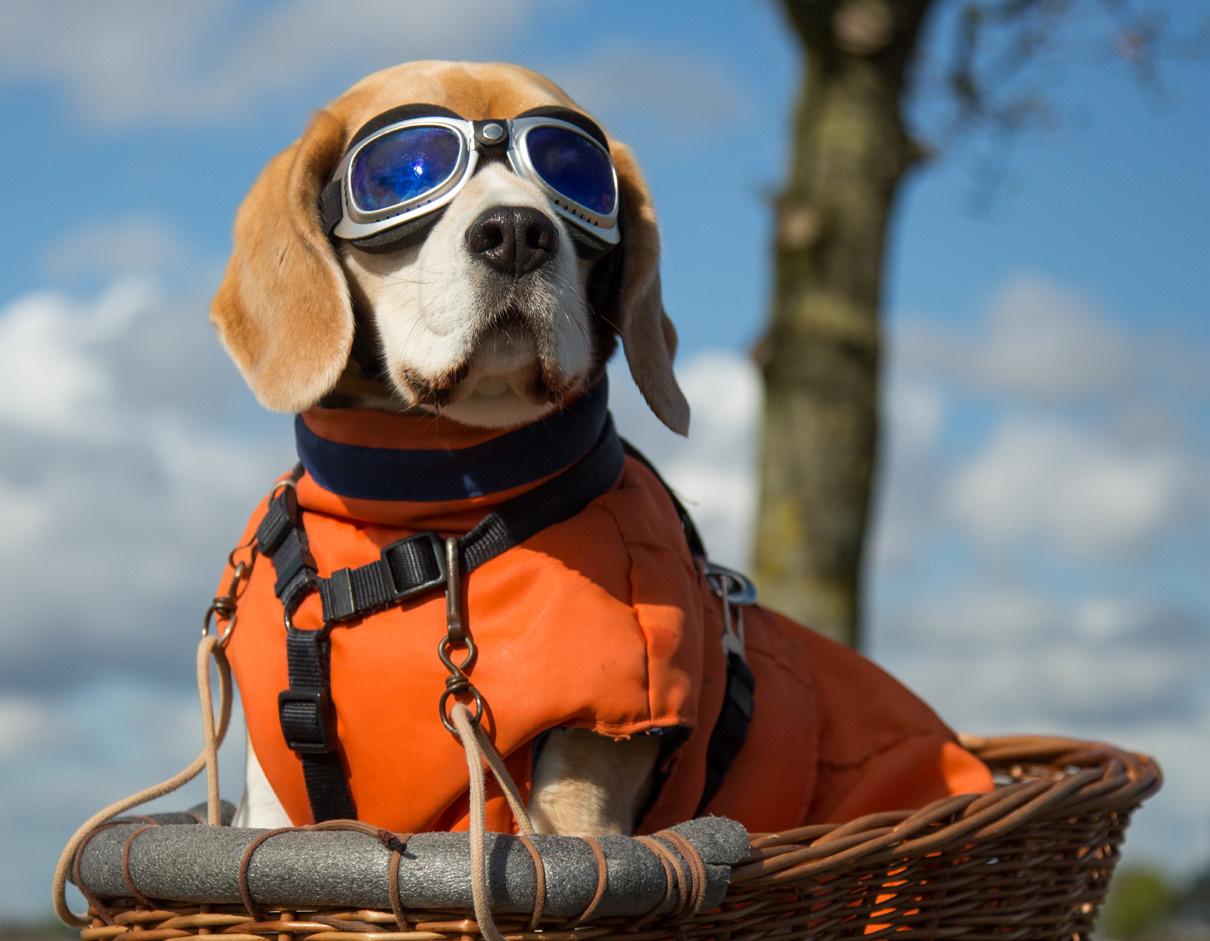
Joanne Bibby – Fursafe® What if your dog was seriously injured and you needed to transport them to the Vet urgently? How would you go about transporting your dog, so that you: • don’t exacerbate the injury getting in or out of the vehicle? • avoid adding pain to their already painful situation? • can help them if they stop breathing or their heart stops beating whilst on the way to the Vet? and • ultimately get your dog safely into the hands of the Vet?
The following steps will make the above possible. 1. Stabilise all injuries – this includes severe bleeding, open wounds, fractures and spinal injuries 2. Manage shock 3. Secure and / or physically support the dog to the car and into the car
4. Ensure the dog is positioned appropriately in the car
5. Remain calm and focus on the task at hand
safety precautions 1. Well before an emergency, ask yourself how you will transport your dog – will it be on a stretcher if it is a large dog; will you need to carry your dog in a crate and if so, could you lift it? 2. Know in advance how you will secure your dog onto the stretcher or make-shift board
3. Ensure the stretcher or crate fits easily through the door of the vehicle
4. Make sure the stretcher or crate fits on the seat and can be secured in place 5. Know the best way to your Vet or if you are travelling where the nearest one is; do a practice run
6. If at all possible, pre-arrange a backup driver, that you can access at a moment’s notice, so you can sit with your dog on the back seat. 7. Limit their movement.
8. Put a muzzle on injured dogs to protect yourself, from being bitten out of fear or pain; however, never put a muzzle on a dog who is having difficulty breathing, has a facial injury or is unconscious.
Always make sure the board fits in car before tying dog to it. When securing dog onto stretcher make sure you don’t tie over injured areas. 9. Always call the Vet and inform them you have an emergency and are on the way and advise your estimated time of arrival.
preparing for transport Before you begin moving your dog to the car, ask yourself if your dog is medically stable? • have you checked your dog’s Airway; Breathing; and Circulation?
• have you controlled severe bleeding? • are wounds dressed to reduce the risk of infection? • are fractures stabilised?
unconscious or unable to walk If your dog is unable to walk, whether because of injury or because the dog is unresponsive, you will need to carry them to the vehicle. • To achieve this, you may need to secure them onto a stretcher or make shift board. A make shift board could be an ironing board, a piece of wood or some other hard surface. • Where spinal injuries are suspected, slide dog sideways by pulling dog by scruff and lower back fur, onto hard-surface stretcher keeping head and neck on board (don’t allow it to hang off the end). • Secure dog in place – tie dog to board using strips of material, e.g., towels, to ensure stability when moving, to avoid dog slipping, restrict sudden movements or unbalanced lifting. • If necessary, use a blanket as a makeshift stretcher and have another person or people help keep stable. • Make sure unconscious dogs are placed on their side, opposite to injured side, and their face, facing forward, not towards the back seat rest. • Alternatively, for a small dog, wrap them in a blanket, you can then lift them by cradling them in your arms, keeping their body still and straight, ensure the injury is facing outwards and not pressing up against your body or under your arms; then place them in a box or crate secured in the vehicle. • You could lay your small to medium size dog on their soft mattress bed and wrap the bed around them, tying it in place. If you cannot lift your dog on your own get some help – just make sure you secure using a seat belt so the dog does not slip off the seat.
conscious and able to walk • It may be less traumatic for large dogs to walk to the car, if they are able, and allow them to get comfortable on the seat, if possible. • Assist your dog to walk by using a sling or towel under the hips (if not injured in that location
or under their shoulders if injured in the rear) and support their weight so they can walk. • If you have a big dog consider getting a ramp to get into the back of the vehicle. Otherwise get help to move large dogs. • Always cover dog with blanket. • Secure in the car using anchor points or seat belts. • Carry small dogs, wrapped in blanket, to the vehicle and place in a secured crate or box. • Where possible, sit beside your dog and speaking in a soothing tone, stroking gently. Do not hold them or hug them. • Never place your face close to theirs when injured.
Make sure the car door is open and seat is prepared before lifting dog.
driving to the vet • If you are the driver slow your breathing and focus only on driving. • Don’t keep looking away from the road and toward the dog. • Keep your voice calm and reassuring. • Take the road you are familiar with; do not attempt to take short cuts unless you know them well.
• If possible, whilst someone else drives, sit in the back with the dog, monitoring and soothing during trip to vet. • If you have a driver: • If your dog stops breathing, begin artificial respiration on the way to the vet surgery. • If your dog’s heart stops beating, begin CPR on the way to the vet surgery.
on arrival at the vet
If you have a severely injured or unconscious dog let staff know you have arrived so they can remove dog appropriately from car and take immediately into the examination or resuscitation area.
References: Fursafe Emergency Dog First Aid Guide and ANKC PROCEDURE
Miss Gabrielle (Gay) Westmore – Life Membership Dogs Queensland
It is with great pleasure that the Dances With Dogs Club Qld Inc proposes Miss Gabrielle Westmore (Dogs Qld Membership Number 4004240270) be considered as a recipient of the award of Life Membership of Dogs Queensland.
Gay Westmore has been a member of Dogs Queensland for over forty years.
From 1980 to 1993 Gay went from being the Foundation Secretary of Lockyer Valley Dog Obedience Club to either Secretary or VicePresident continuously until the early 1990’s.
Gay then moved to Brisbane and became a member of the Pine Rivers Dog Training Club Inc. In the years since then Gay’s been an active member and trainer with the Pine Rivers Dog Training Club. In 2011 and from 2013 to 2018 Gay was Secretary; from 2019 she was on the Committee, and from 2016 to 2020 the Trial Secretary. These many and varied roles, which Gay has fulfilled successfully, were all done in conjunction with competing in Obedience, Rally Obedience, Agility and, as they were introduced, Dances With Dogs and Trick Dogs.

Gay sat as the Chair for the inaugural meeting of interested persons to form a Dances With Dogs Club on 28 March 2009 and in the 10 years since the affiliation of the Dances With Dogs Club Qld with Dogs Queensland. From 1 Jan 2010, Gay has been President for 7 years and Secretary for 3.
In collaboration with other Club members Gay has organised many workshops/seminars with international presenters, training workshops with both local trainers and as a trainer herself. Gay has always been a part of DWDCQ DWD competitions.
In those 10 years Gay was the author of a Dances With Dogs Training Manual, an Obedience Training Manual and, recently, a Trick Dog Training Manual with accompanying visual aids all
PICTURED ABOVE: BARB MURFET, GAY WESTMORE AND LAURIE KNAUTH
of which has raised in the region of $20,000 for the DWDCQ. These have gone all over Australia and internationally.
As part of the development of both Dances With Dogs and Trick Dogs, Gay was originally a participant on the ANKC Dances With Dogs Working Party and since its inception has been the minute secretary for the National Dances With Dogs Committee and the ANKC National Trick Dog Working Party. This began with development of DWD from 2008 and then the 2 year and 5 yearly reviews of DWD Rules and the Trick Dog Working Party from 2018.
The number of hours which Gay has dedicated to compiling and finessing the ANKC Rule Book and associated documentations for both Dances With Dogs and Trick Dogs has been considerable. From the commencement of the sports Gay has been a Foundation judge in DWD and a Foundation judge in Trick Dog.
Since 2009 Gay has also been a member of Dogs Queensland’s Dances With Dogs Subcommittee responsible for the continuing growth of DWD and now Trick Dog in Queensland. During this time Gay has been involved with the conduct of 3 State DWD competitions and 2 National DWD competitions – the only Nationals so far conducted in Australia.
Also in 2015 Gay was the Compilation Secretary to the Dogs Queensland Dogs Sports Committee for the Obedience and Rally Obedience Rules Review cycle and member of the Dogs Queensland State Trials Committee.
Gay’s dedication to Dogs Queensland Dog Sports is unmeasurable and her shared knowledge shown in the manuals has attracted many new members to our dog world.
It is with great pleasure the Dances With Dogs Club Qld nominates Miss Gabrielle Westmore for the award of Life Membership of Dogs Queensland and we wish Gay many more years of enjoyment and participation in our sport.
OZ TRAIL MEMBER DISCOUNT
Members looking top purchase dog–related products including gazebos, chairs and more can now take advantage of a 25% discount from Oz Trail. The Dogs Queensland collection can be viewed by visiting https://www.oztrail.com.au/ collections/dogs–queensland Members will need to enter the promo code DOGGIEDEAL21 with the discount being applied at checkout when using the link: https://www.oztrail.com.au/discount/ DOGGYDEAL21?redirect=%2Fcollections% 2Fdogs–queensland
MISSING DOG WORLD MAGAZINES (C.C.C.Q.) 1968 January, February, March, June, July and November 1966 January 1964 January and December 1963 February, June, July, August, September and October 1958 January, May, September and October 1957 January, July, October, November and December 1956 January and July 1955 May and December

CAN YOU HELP?
Dogs Victoria’s Laurie Luxmoore Library is seeking the help of fellow canine members in sourcing the following Dogs Queensland journals.
If you have any of the listed magazines and would like to donate them to the library, contact Heather Simpson at corwin@iinet.net.au
GAY WESTMORE Gay Westmore Gay Westmore – RESPONSE TO AWARD OF LIFE MEMBERSHIP OF DOGS QUEENSLAND – Response To Award Of Life Membership, Dogs Queensland – Response To Award Of Life Membership Dogs Queensland
I was in shock when Barbara Murfet rang me to tell me that I had been awarded the Dogs Queensland Honorary Life Member award, but I am very grateful to Dogs Queensland for this award and to the Dances with Dogs Club Qld for nominating me. But nothing that I have done or achieved could have happened without the encouragement and support of a lot of other people.
We have probably all seen the Optus ad, “It all starts with a ‘yes’.” I would like to talk briefly about the course of events which led to my receiving this award, including some of the key people who asked a question, to which I said “yes”.
First of all I can blame Pat Kingham, from Lockyer Valley Obedience Club (though it was a social club branch of Ipswich Dog Obedience Club back then). In 1980 I had my first German Shepherd and took her to the club as a puppy. I’d only been attending for about 6 weeks when Pat asked me if I could instruct. My response was more “who me?” than “yes”, but she convinced me that I could do it. Mind you, in those days it was pretty much a matter of shouting “forward, left turn, about turn, correct your dog”!!
Pat then asked me to be Secretary and then added Trial Secretary when Lockyer Valley became a fully affiliated club, and I undertook those roles for about 10 years; I learnt heaps and made lots of friends in the process.
My involvement in the dog world could, in fact, have started in the 1970s, when I took my Labrador to an obedience club in Brisbane. Tara was a very good dog and we did well. But she was unregistered, so they weren’t interested in us. My first German Shepherd, Heidi, was also unregistered, and yet Pat and the other folk at Lockyer Valley nevertheless encouraged and supported us. The previous club’s unspoken response, “no we’re not interested in you” had its own consequences and lost them not just me but no doubt lots of other potential contributors to the club.
The years rolled on to 2003 (I was back living in Brisbane by then). The next person who asked me a pivotal question was Jackie Duffy, who strolled up to me at a trial at Oxley (we were passing acquaintances at the time), and asked if I’d like to learn abou t a different method of dog training. I said “yes”. That led me to attend a workshop at Pine Rivers Dog Obedience Club with Sue Hogben; that experience turned my dog training world upside down. Sue and her Golden Retriever Spinner were amazing! She introduced us to the core training tool – a “yes” or marker to let the dog know she’s done what we want (as opposed to a correction when the dog does the ‘wrong’ thing) – and so many other aspects of positive reinforcement based dog training.
Over the years since 2003, I have had the privilege of attending workshops with many fabulous local, interstate and international trainers from whom I have learnt so much. Saying “yes” to new and different ideas can lead us on exciting new adventures.
One of those was when Dances with Dogs came along and I said “yes” to the opportunity to become involved in this discipline. Then people said “yes” to my suggestion that we form the Dances with Dogs Club, which has now celebrated its 11 year anniversary.
In the meantime, back in 2003, I had joined Pine Rivers Dog Training Club and in due course took classes in Obedience trialling and Dances with Dogs, as well as becoming Secretary and Trial Secretary of the Club.
I used to write copious notes for my class followup, and after a couple of years thought it would be sensible to compile them into manuals – and so today the DWD Club has three manuals – Obedience Trialling, DWD and Trick Dogs – which together have generated considerable income for the Club. This has been supplemented as a result of the club saying “yes” when I offered to develop a series of training videos to illustrate methods of training DWD – but that morphed into training tricks when the new Trick Dog discipline came onto the horizon in 2019.
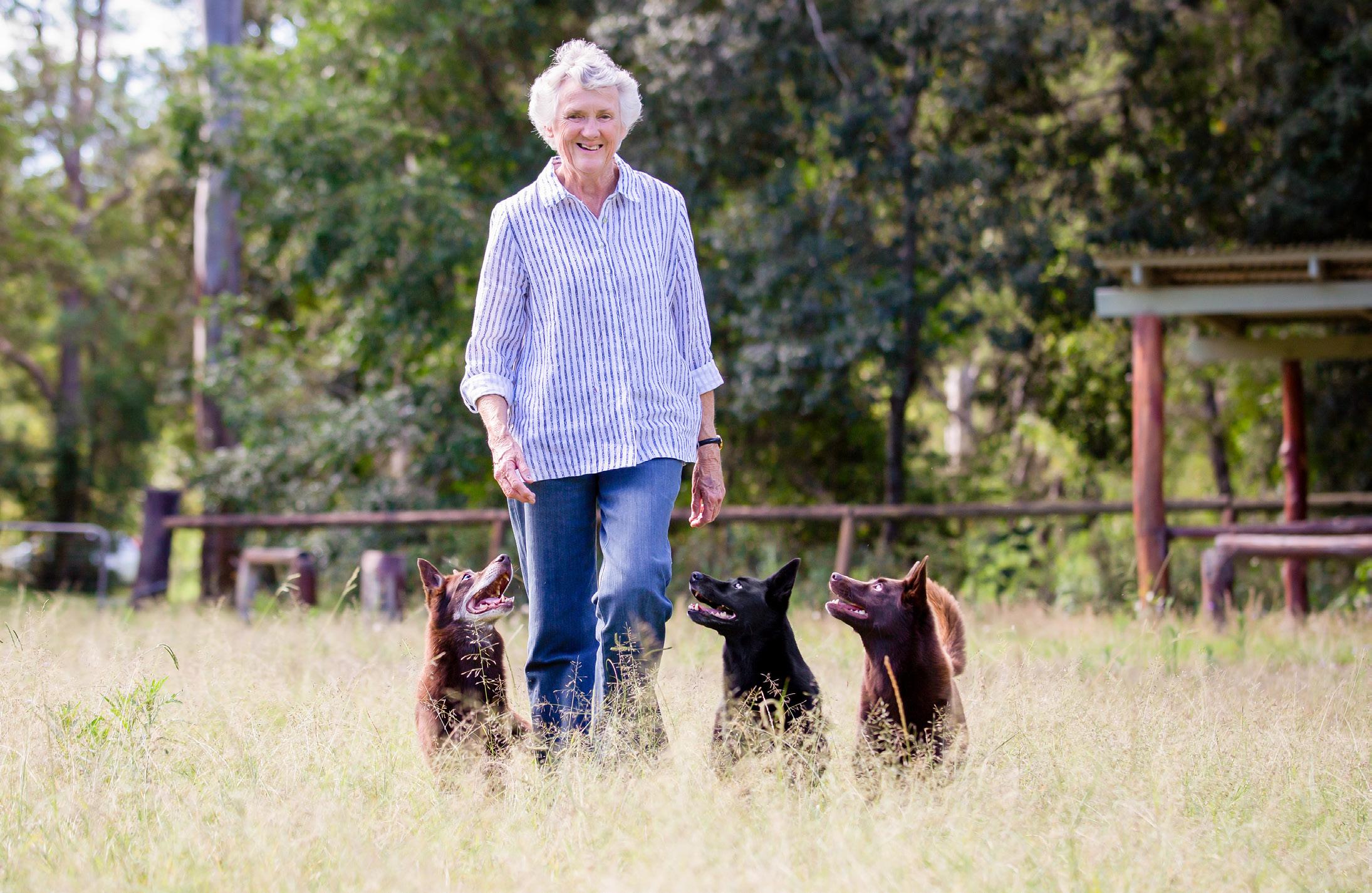
Then there’s Barbara Murfet and Coral Pethers who also asked questions to which I also answered “yes”. “Could you act as secretary to the ANKC National Dances with Dogs Committee?” That was back in 2008, prior to the inauguration of DWD, and has continued through two 5-year rule reviews and the development of the Trick Dog discipline. More recently, in 2018, Judy Wright, chair of the National Scent Work Committee, asked “Could you assist with writing the rules for Scent Work?”, to which again I said “yes”.
I actually think that “it all starts with a ‘yes” is putting the cart before the horse. Often it needs to start with a personal invitation to someone to participate and contribute. A large percentage of people won’t put themselves forward, thinking they are ‘not good enough’, but they may well say “yes” if asked. At the other end of the scale, there are those people who are open to change and who say “yes” when someone comes up with an initiative which may be unconventional or sound wacky. We need to nurture people at both ends of the scale and to encourage participation, contribution, initiative and innovation. We also need to help contributors put on the brakes at times, so that they don’t suffer burn out.
There are also people who say “no” – “no, I don’t have time”; “no, I’ve got to train my own dog” etc. But some people will say “no” because they don’t think they’re capable of what is asked of them or worry about what others may think. Others on the receiving end of a proposal or suggestion may respond “no” because the proposal has some flaws, because it’s not the right time or for other number of reasons specific to the circumstances. It’s up to each of us how we respond to “no” answers – whether we take our ball home and refuse to play, or bounce back for another day.
I’d encourage members to think whether they can say “yes” when asked to contribute in some way. If you do join an club, think of Stephen Covey‘s “7 Habits”. It will be more productive to work within the system and try to influence change than to come in like a bull in a china shop and try to overturn existing systems and structures. That is a hard one, and one at which I have at times failed!
Finally, say “yes” to our dogs. Remember that we’re all in this because of and for them. Value them; value what they give us and what they teach us. Remember: “Dogs do speak, but only to those who know how to listen” (Orhan Pamuk) – something I’m still learning how to do.
And I hope that makes more sense to readers than the Optus ad does to me!!









